Plants from across the globe come in a huge variety of different shapes, sizes, and of course colors. On top of that dark purple plants also vary in the way they are used or what they symbolize.
The beauty of having such a wide choice of colorful plants on offer is that we can easily catch the eye when it comes to creating a dramatic contrast of colors.
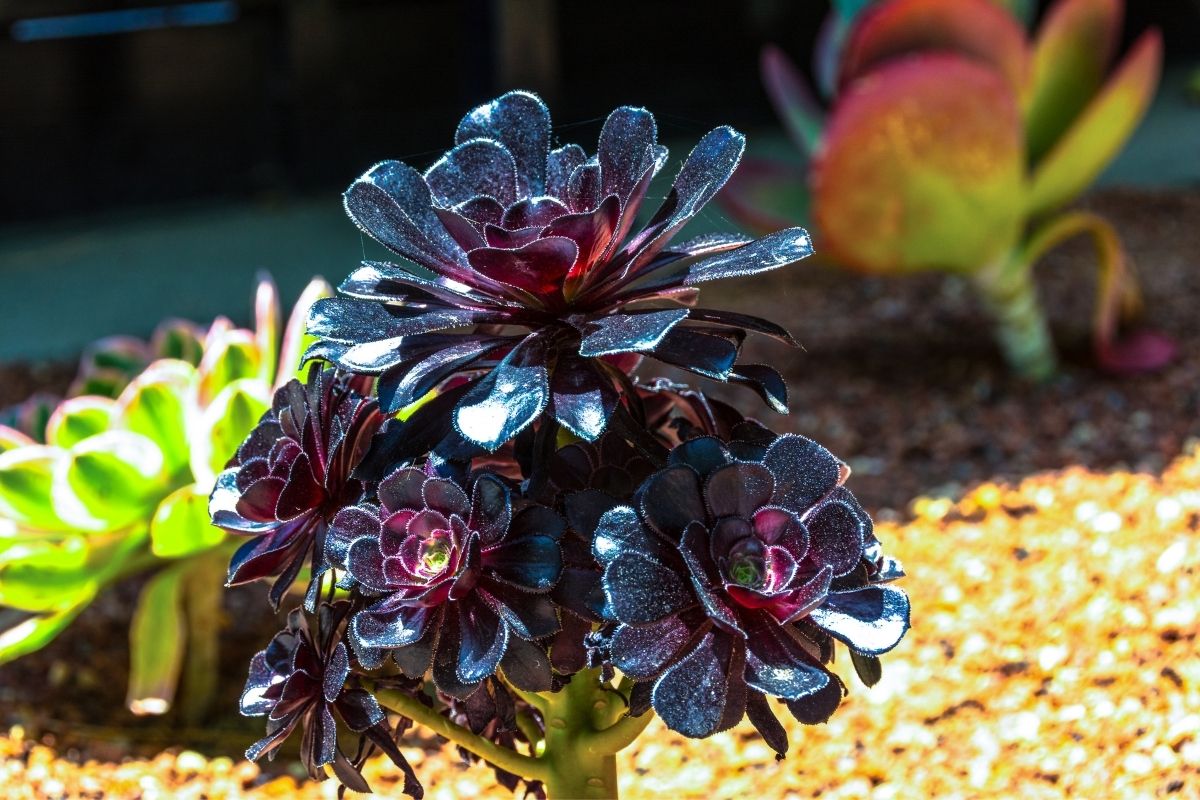
One color that catches the eye well, bouncing off other colors and combining beautifully with green-leaved plants is dark purple. A solitary dark purple plant is the perfect statement plant. However, with so many purple plants to choose from, how on earth do you pick which one to grow?
To help broaden your knowledge about purple plants and to give you the inspiration you need to pick a plant to grow, we have compiled a list of dark purple plants from around the world. We’ll look at their characteristics and any uses they may have.
Without any further ado let’s dive into the list!
1. Dahlia
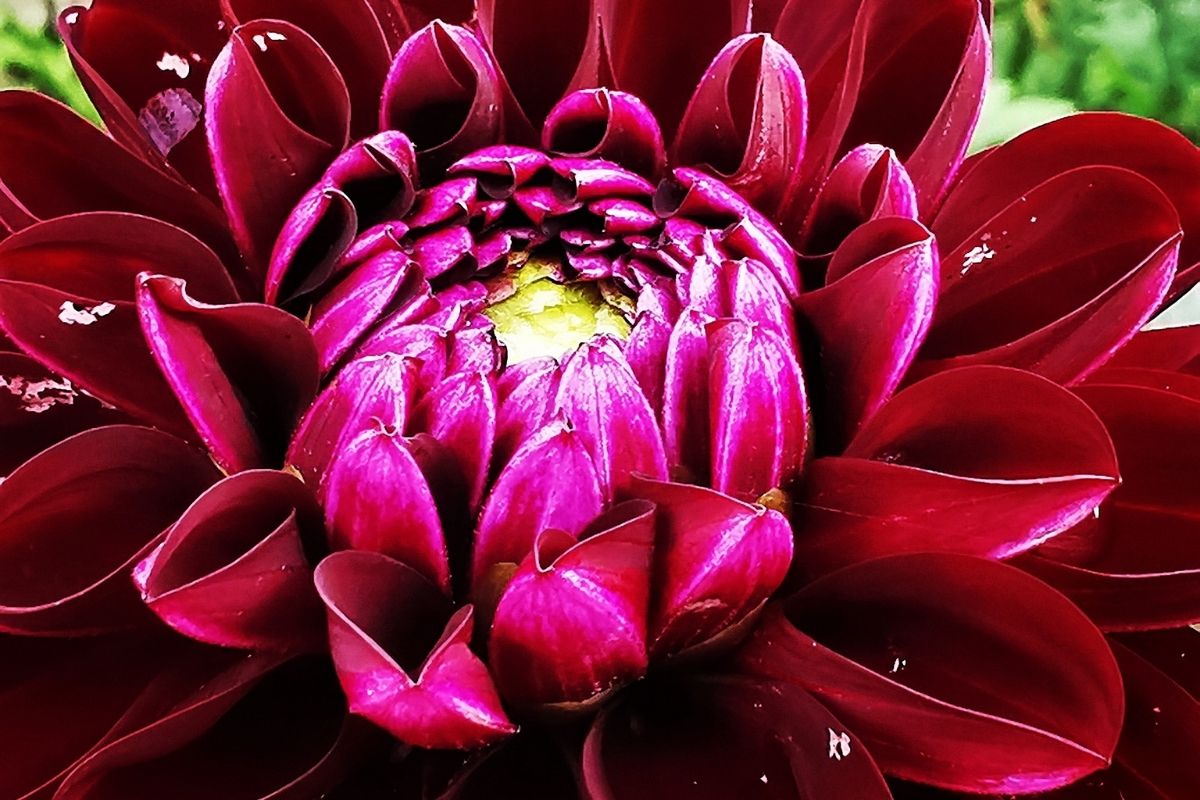
The first plant on our list varies dramatically in color. Some varieties are found in lush vibrant colors, whilst others are deep and dark in color. One variety of this tubular perennial plant is the ‘purple gem’. The ‘purple gem’ has simple toothed leaves.
Sitting atop each solitary stem is a rich-purple-colored cactus-shaped blossom featuring elongated petals. Combine this plant with green-leaved plants if you want it to stand out.
2. Purple Basil

If you’re after a purple plant you can also eat, purple basil is a great option. Unlike other varieties of basil, the leaves on this plant are larger and dark purple in color, hence the name purple basil.
Also known by the name sweet basil, the leaves of this attractive plant are typically put in pesto or used to make a garnish. In terms of taste, you can expect to experience a strong clove flavor.
RELATED: The Color Purple: 11 Different Types Of Purple Colored Veggies
3. Atrosanguineum Ornamental Rhubarb
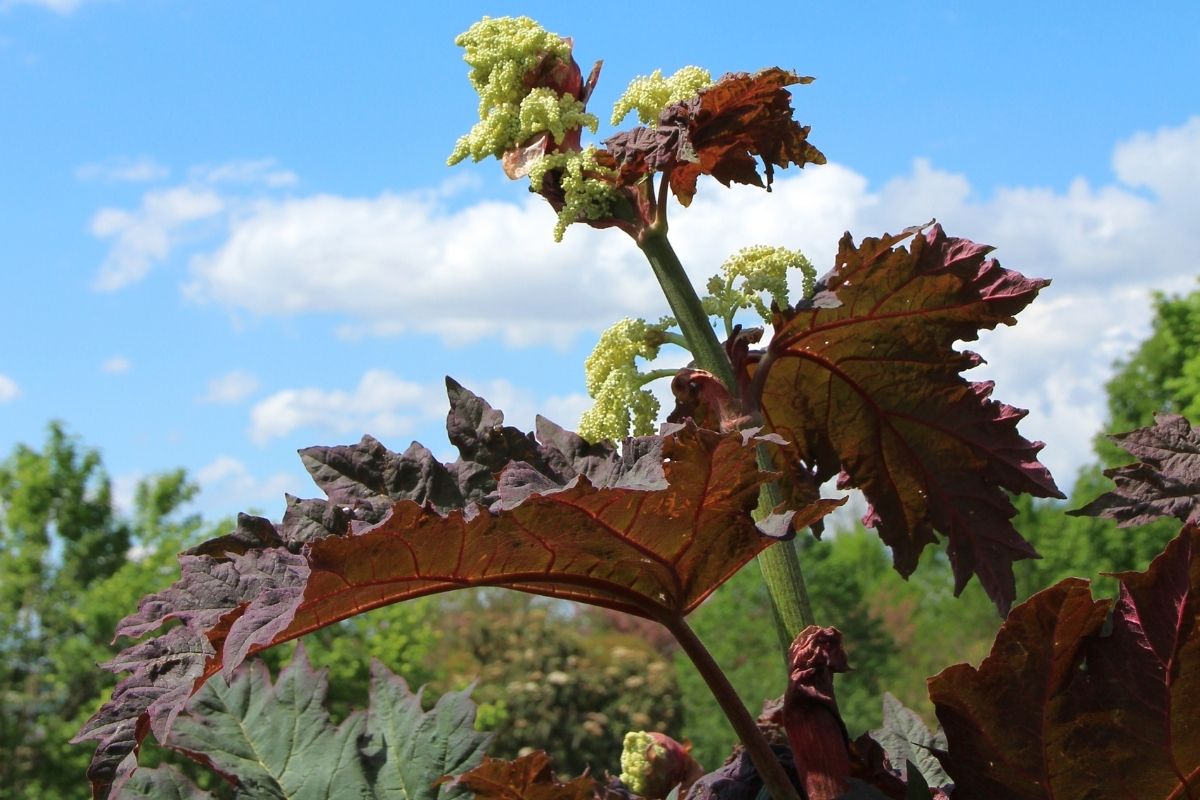
Once used for medicinal purposes by the Chinese 5,000 years ago the ornamental rhubarb plant is today used as a statement plant to add intrigue and color to a garden. It is very easy to spot thanks to its huge lobed purple leaves that reach up to 2 feet in size.
From the leaves a tall flowering stem emerges, revealing beautiful panicles of white and pink flowers. Plant the ornamental rhubarb plant in full sun or partial shade in soil that is moist for the best results.
4. Castor Oil Plant
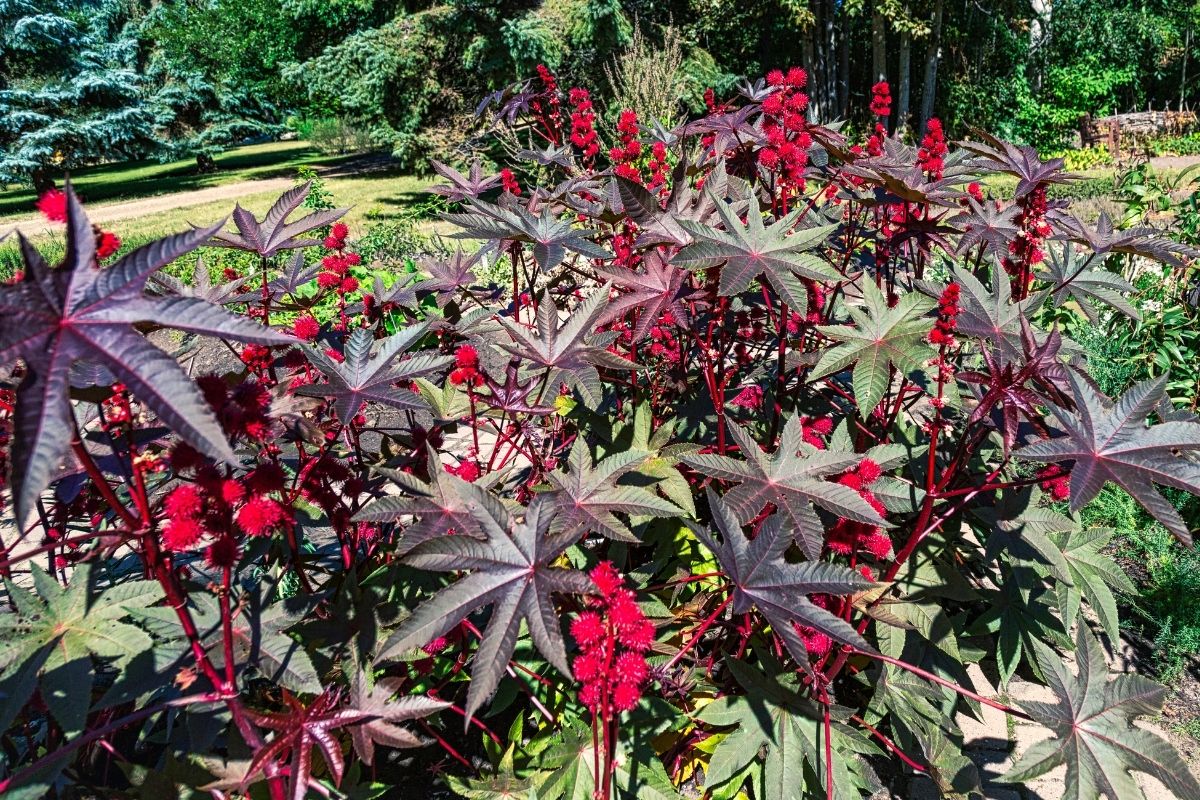
Known scientifically as Ricinus communis, the castor oil plant is a stunning ornamental plant commonly grown in tropical gardens. The darkest varieties of this plant include Carmencita and New Zealand Purple.
A tall, branching shrub, growing to 3m high, it has long-glossy leaves that have approximately 12 lobes with toothed segments. The oil from the castor oil plant is actually used to treat heartburn and dry skin.
5. Physocarpus
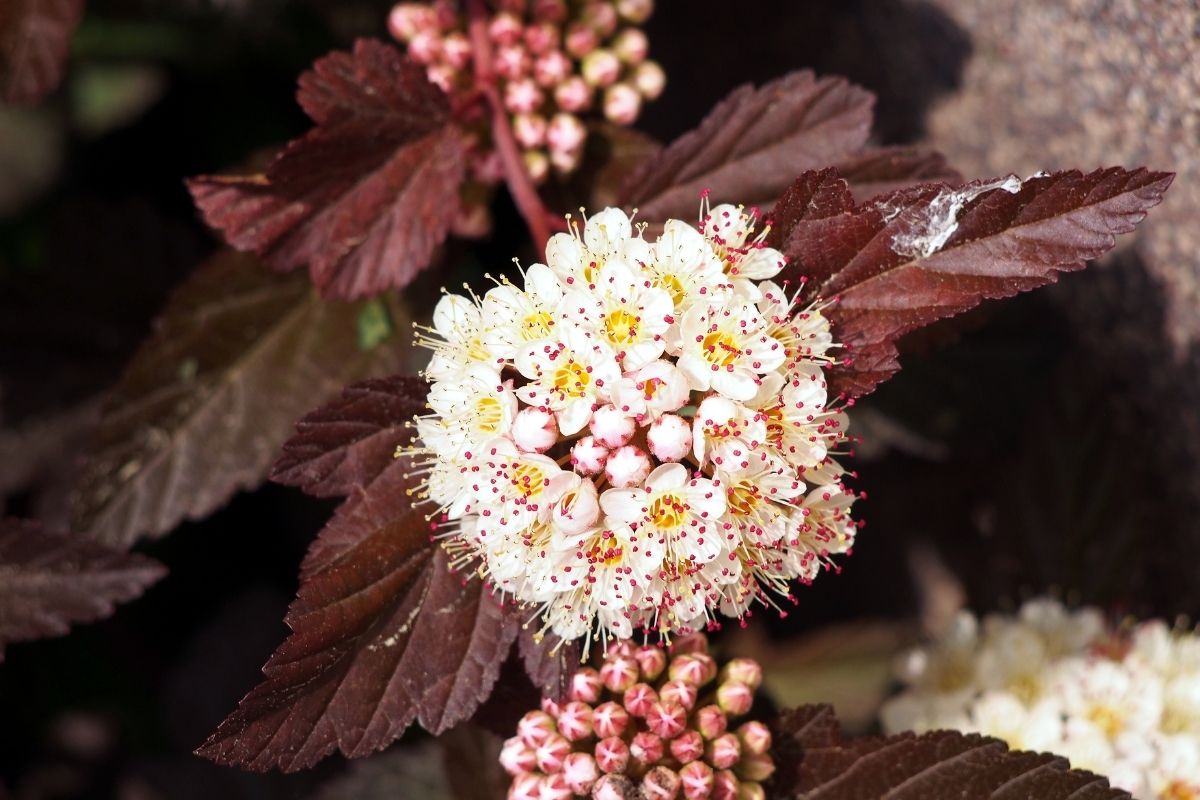
This deciduous shrub looks best when grown in a border surrounded by complementing plants. The plant is grown for its beautifully rich purple-colored foliage and delightful pink-white flowers that bloom in early summer.
The physocarpus flowers contrast wonderfully with the dark purple foliage. Reaching a height of 6 feet with a spread of up to 4 feet, this plant will grow well in virtually any soil conditions. This makes it a great versatile option.
6. Euphorbia Dulcis

Euphorbia Dulcis is a compact, bushy, rhizomatous perennial that usually grows in a mound reaching 9 to 20 inches tall and equally as wide. Along each erect stem of the Euphorbia Dulcis plant sit oblong, lance-shaped dark purple-green leaves that grow up to 3 inches in length.
Commonly called the ‘chameleon’ plant, it is considered to be invasive. This along with its fishy scent might make you think twice about planting it in your yard, which is a shame because the plant itself looks gorgeous.
7. Dark-Leaved Elder
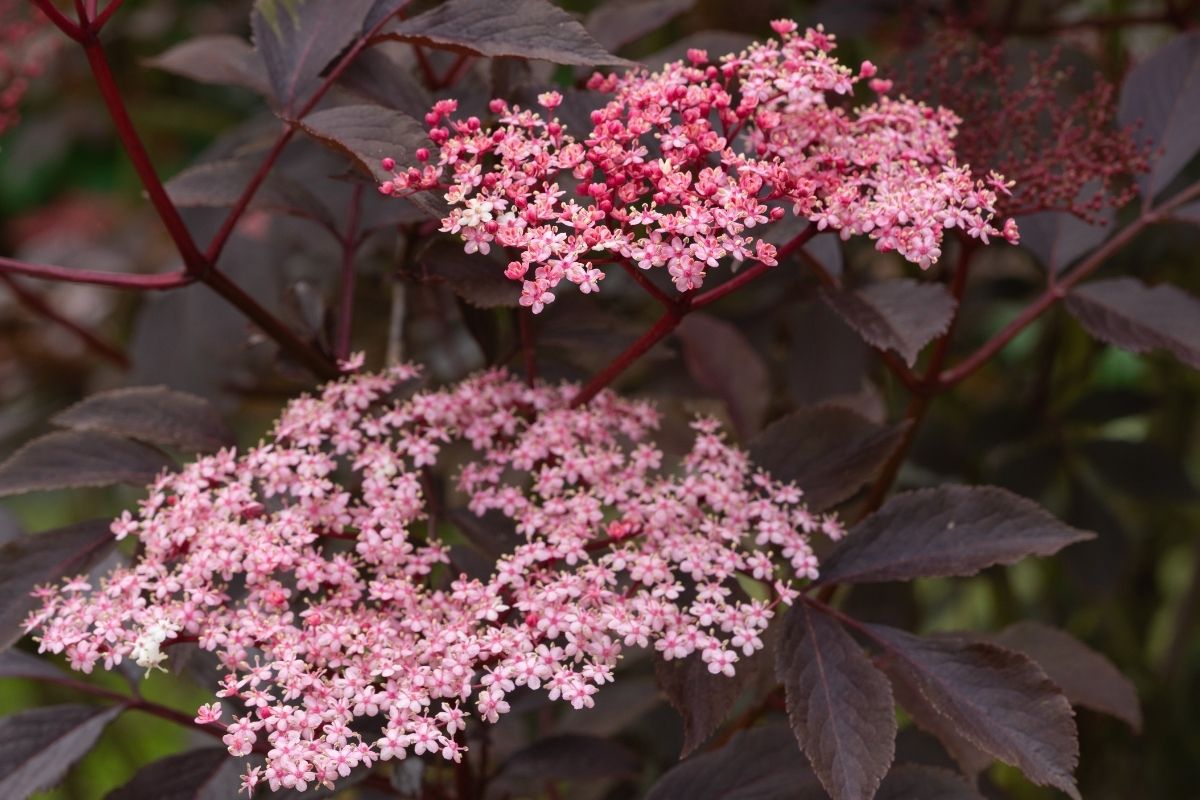
The dark-leaved elder plant has very dark purple foliage. Some would say it is black. As a result of its dark colors, this plant adds a striking appearance to any garden. In mid-summer, large clusters of tiny, delicate pink flowers appear.
These flowers provide the plant with a lovely citrusy smell. You will also find red berries growing on the elder plant. They can be used to make jams and fruity wines. Left to grow in full sun, this plant will reach 8 feet tall.
8. Acer Platanoides Crimson Sentry
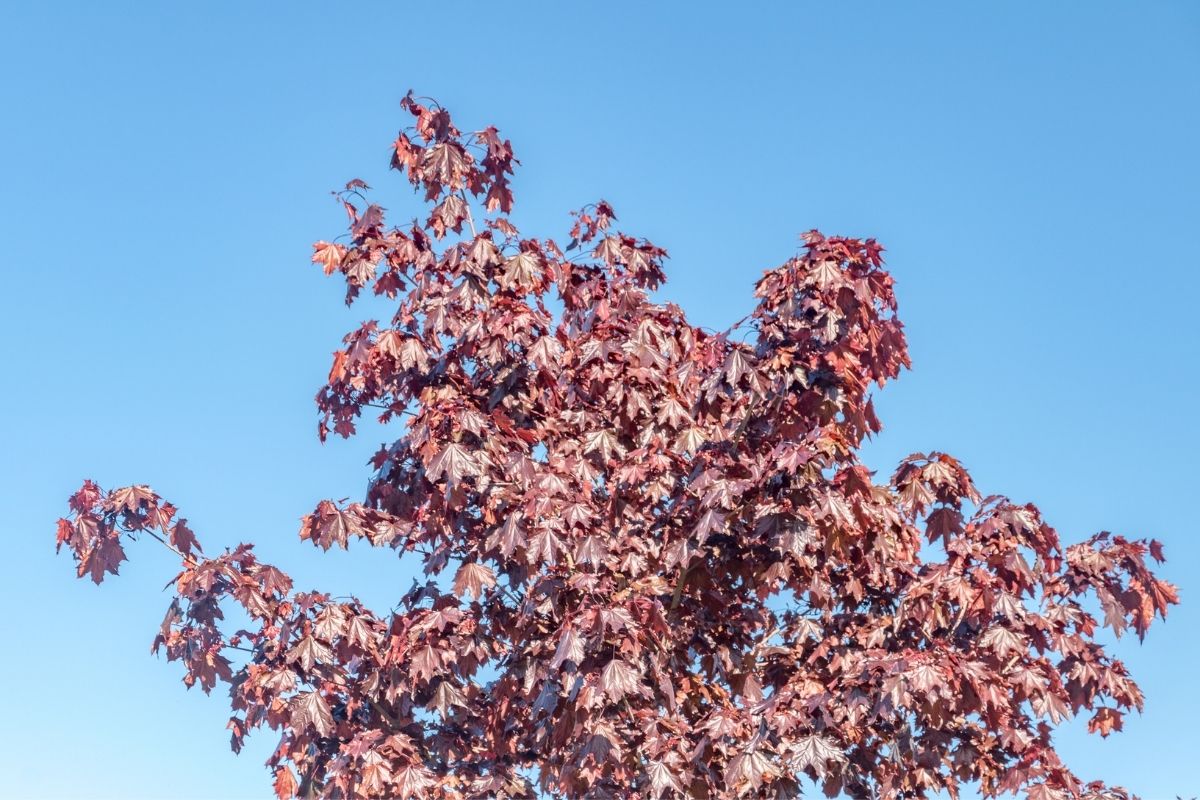
Acer Platanoides Crimson Sentry is a member of the maple tree family. Native to Europe and Asia it is a much smaller tree, featuring stiff ascending branches. In spring the leaves on this tree emerge in a dark red-purple color, turning into a luminescent crimson color by the end of autumn.
This tree is not only grown for its beautiful leaves. It is also used to make furniture and musical instruments. Reaching heights of 32 feet, the syrup from this maple tree is sadly not used to make maple syrup-like other members of its family.
9. Actaea
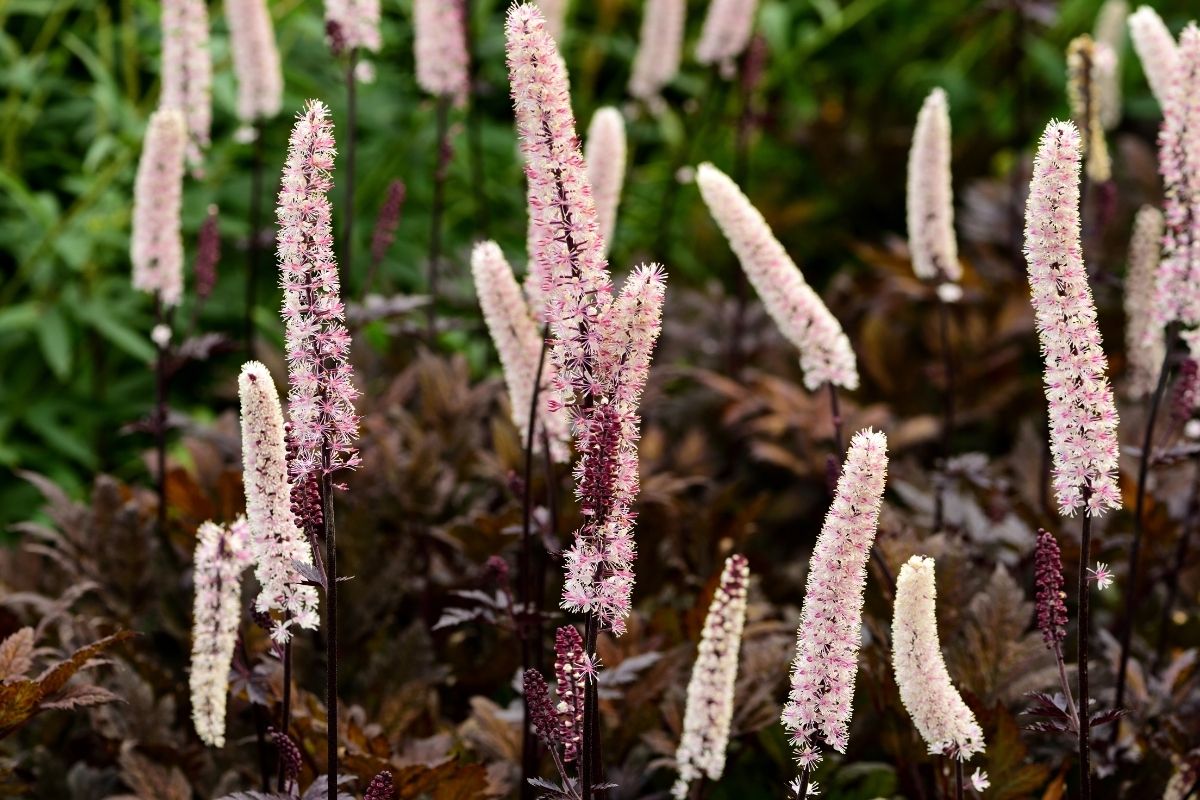
A lover of shade, the Actaea is a unique plant. This is in part due to its tall, elegant spires of bright white and purple flowers that stand upright from the plant, looking almost like tentacles.
Though the flowers on this plant are vibrant in color, its foliage is a purple-gray color, standing out well amongst green-leaved plants.
The Actaea needs plenty of shade but still requires a lot of moisture so avoid planting them under mature trees. The plant won’t be able to compete for moisture.
10. Aguja Reptans
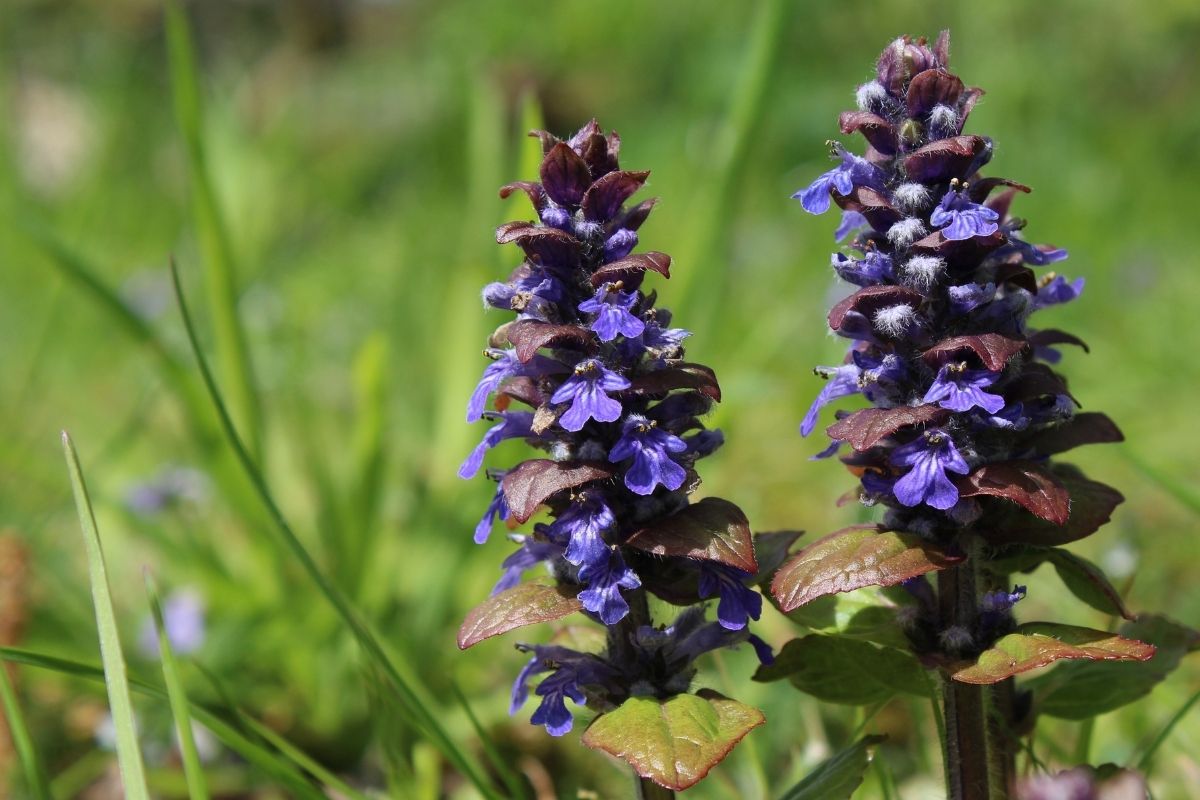
The aguja reptan perennial plant also goes by the name bronze-burgundy or bronze beauty. Native to Europe, this plant has actually become an invasive species in some parts of North America, but it makes a good ground cover when gardening.
The sprawling herb has erect flowering stems that grow to a height of roughly 5 to 15 inches. The leaves on the aguja reptan plant can be reddish-purple in color or metallic bronze.
The flowers on this plant are tower-like with each segment consisting of delicate clusters of petaled purple-blue flowers. This versatile plant can be grown in moist, yet well-drained soil.
11. Cercis

Adding a strong purple color to borders, the cercis plant is grown primarily for its large quantity of pink and purple pea-like flowers that bloom in spring. Sometimes referred to as the ‘Forest Pansy’, the cercis plant is a multi-stemmed tree that also has dark purple foliage.
The leaves on the cercis tree are heart-shaped and have pointed tips. In autumn and early fall, the leaves will start to turn yellow in color. The flowers from the plant are eaten raw or pickled thanks to their refreshing acidic taste.
12. Smoke Bush
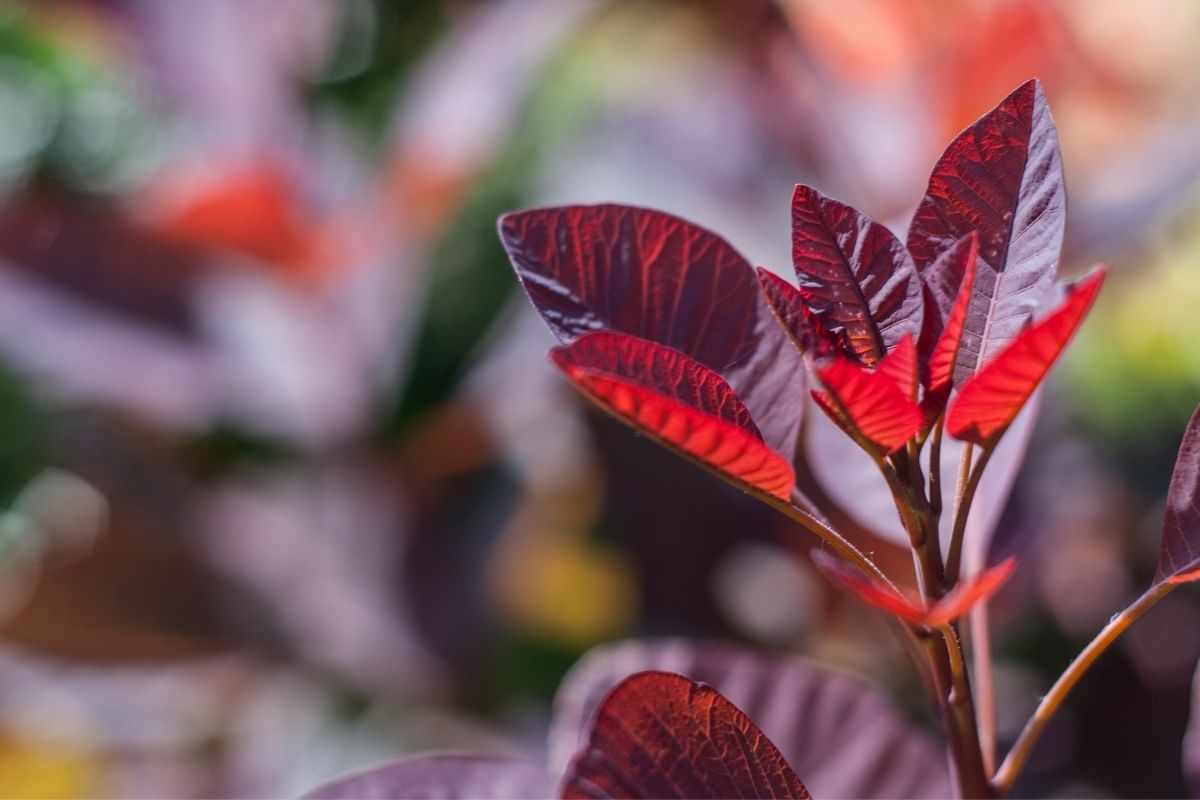
During the summer months, smoke bushes feature a vast collection of feathery flowers that unsurprisingly look just like smoke. If cut back in spring at the expense of the flowers, the plant will produce large, royal purple leaves and extremely dark, yet stunning foliage.
Quite large in size, the smoke bush is usually a shrub or small tree reaching up to 4 feet wide and tall, making it an impressive statement plant.
13. Loropetalum
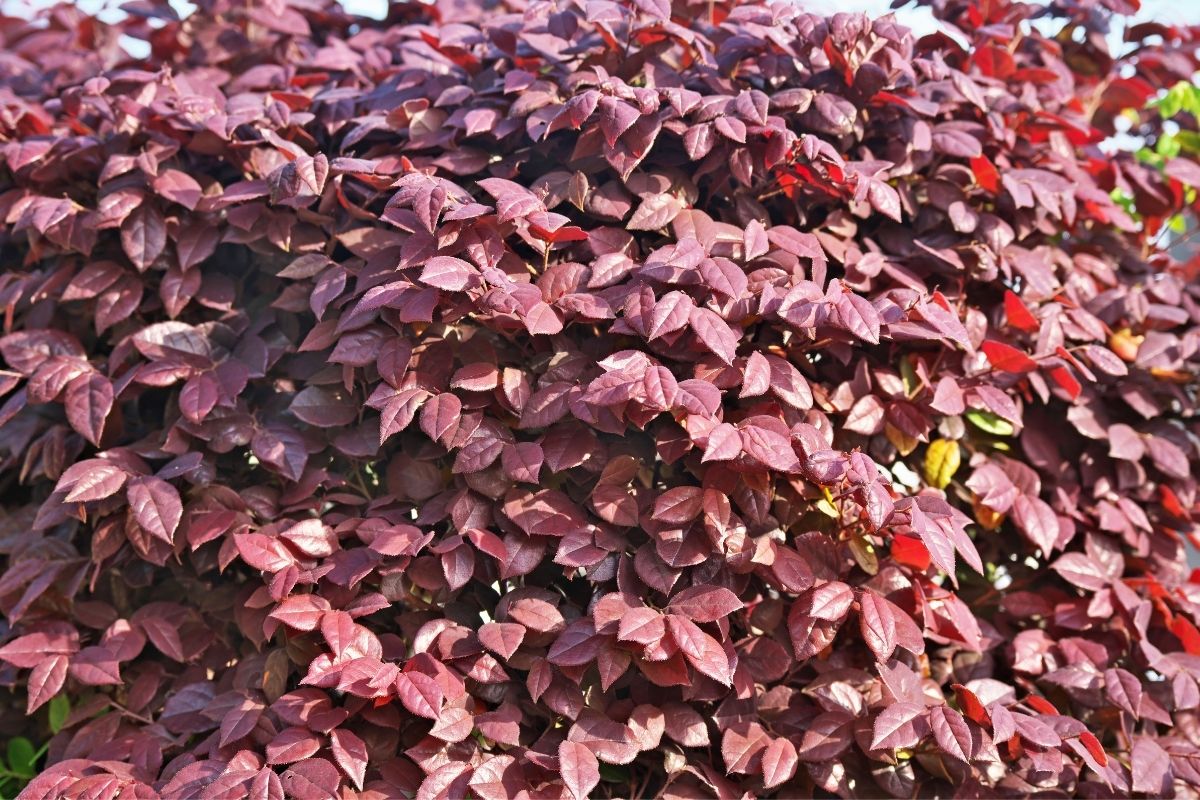
Loropetalum is a gorgeous evergreen shrub recognized for its dark purple foliage and deep pink, divine-smelling flowers. For the darkest foliage of this frost-hardy plant, you should go for the ‘Fire Dance’ or ‘Hot Spice’ variety.
If the loropetalum plant is grown in partial shade, fertile soil, and is well protected from the wind, it should reach heights of 5 to 6 inches with a spread of similar size. However, you do need patience with this plant as it can take a long time to grow.
14. Prunus Cerasifera
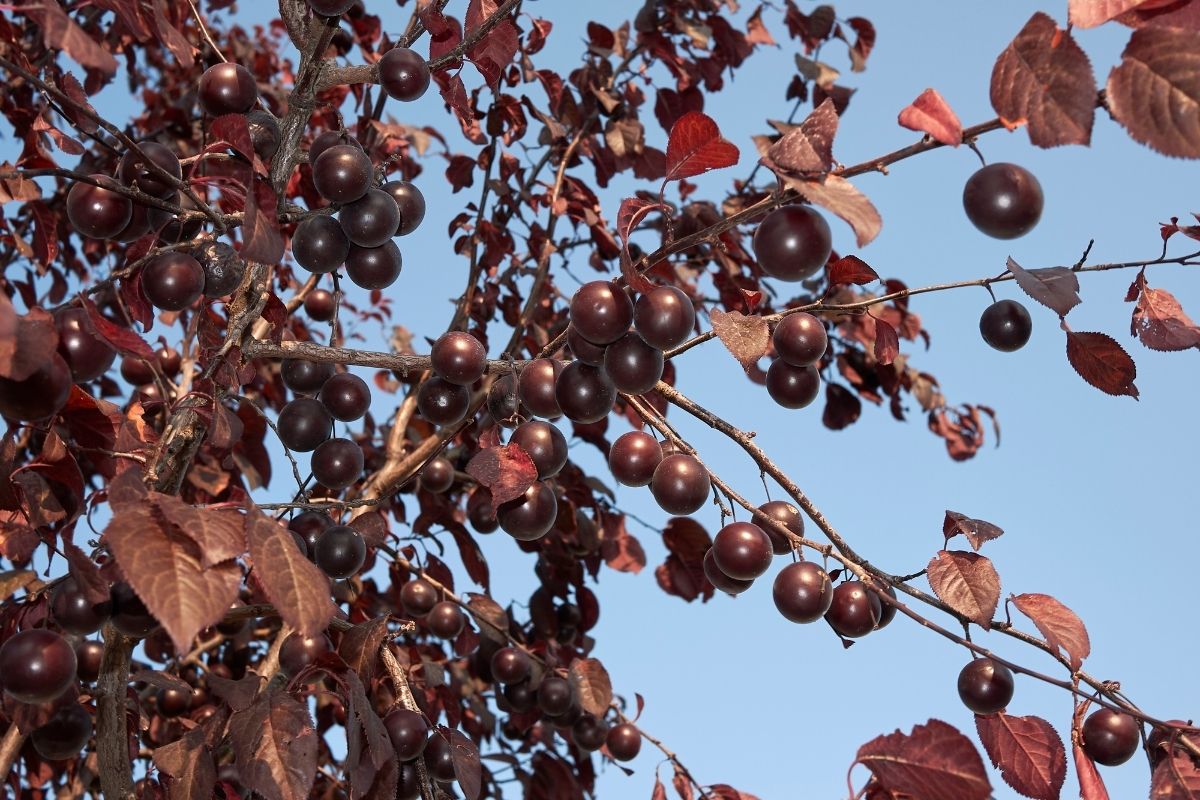
You may know the prunus cerasifera plant by its other name, cherry plum. It is a small shrubby tree with thin, intricate branches that produce a beautiful white flower and edible plum-like fruits.
The plant may not be a dark purple color all year round but as the seasons change its foliage and flowers become darker in color. Eventually, you are left with a deep dark purple color that looks fantastic.
A lot of space is needed to grow a cherry plum tree as it can grow up to 30 feet tall. The mostly solitary white 5-petaled flowers on this shrubby deciduous tree will add fragrance and vibrancy to your garden.
15. Heuchera
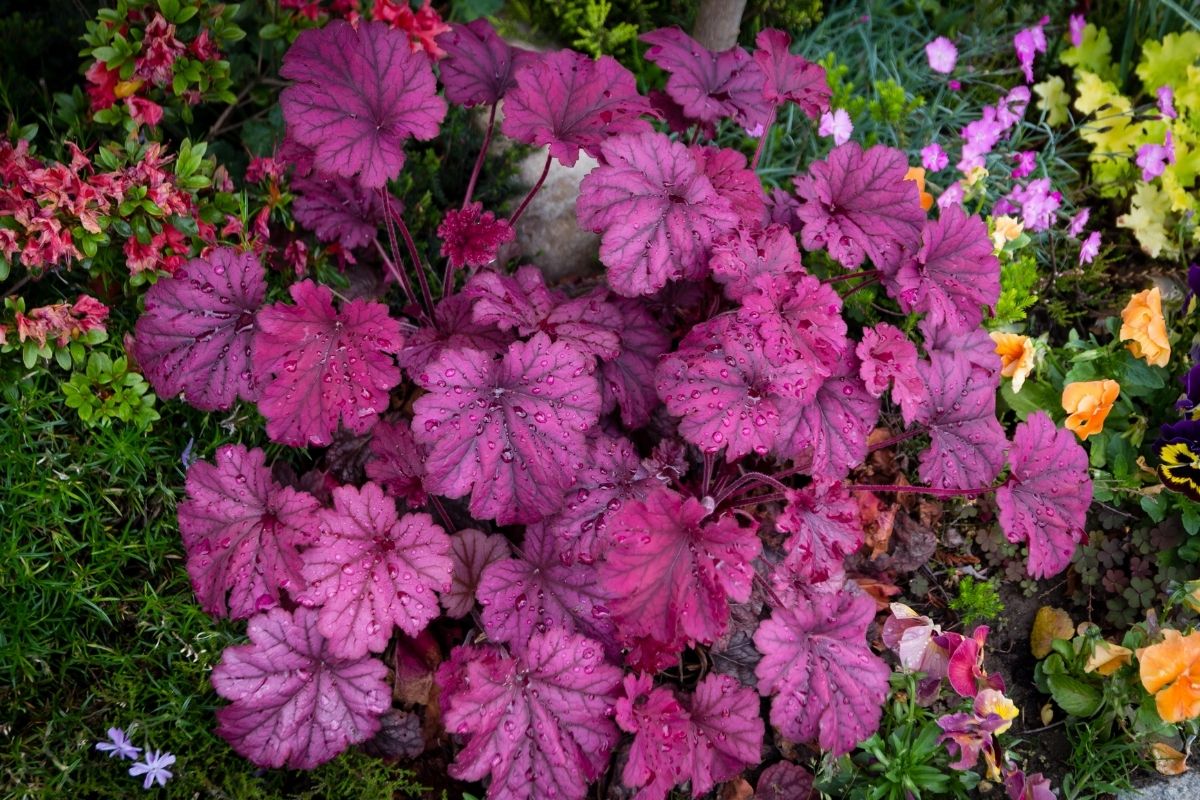
Native to North American woodlands, the heuchera is a perennial plant that tends to grow in dense clumps of dark-colored foliage. The Heuchera ‘Blackout’ variety of heuchera plants features glossy black-purple leaves and inconspicuous flowers that add charm to the plant in the summer.
Best when grown in well-drained soil, the heuchera ‘Blackout’ looks amazing on a shady border or when placed in a hanging basket. Growing to just 11 inches tall and about the same width, this plant is easily manageable for those that don’t want to carry out too much maintenance.
Final Thoughts
Plants with colorful foliage have always been sought after by gardeners. They pique the interest of those walking by and bring an extra element of color to your garden. Plants that are dark purple in color do this brilliantly.
As you can see from our list there are many different types of plants that come in a shade of dark purple, whether it be because of the beautiful flower that sits atop the plant or the lush dark foliage beneath.
Some plants take the form of versatile, hardy trees and shrubs, while others are simple, yet beautiful delicate plants.
To bring a new dark purple color to your garden isn’t difficult to do. Thanks to how many options are out there you can pick a plant that suits what you’re looking for. Now you have our list at your fingertips, why not take a closer look at each plant and see which one you want to try and grow.
Editor’s Recommendations
21 Beautiful Types Of Yellow Plants (Including Photos)
5 Types Of Wisteria Plants & How To Select The Right Kind For Your Garden? (With Pictures)







